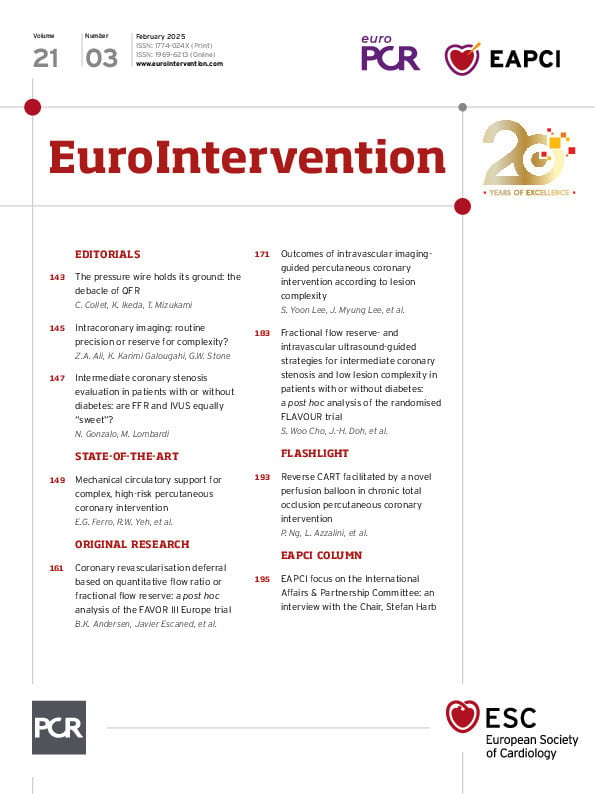The utility of intracoronary imaging (ICI) to overcome the limitations of angiography in assessing lesion morphology and vessel geometry in percutaneous coronary intervention (PCI) has been studied in numerous trials1. The accumulated totality of evidence very recently prompted the European Society of Cardiology (ESC) to raise the level of recommendation for ICI-guided PCI to Class 1, Level of Evidence A2. Hooray, at long last the uplift we had all been waiting for! However, lost among the celebration is the disclaimer that the recommendation is for complex lesions, in particular left main stem, true bifurcations and long lesions. Should ICI be universally used in PCI, or in selected patients/lesions? Which factors determine the utility of ICI? What makes a lesion complex? Is it the lesion or the patient?
In this issue of EuroIntervention, Lee et al seek to answer some of these outstanding questions3. Combining data from the RENOVATE-COMPLEX-PCI randomised trial (n=1,639) and a registry from a single institution (n=2,972), the authors use a score that integrates nine factors of lesion complexity. Their analysis determines a complexity score ≥3...
Sign up for free!
Join us for free and access thousands of articles from EuroIntervention, as well as presentations, videos, cases from PCRonline.com

